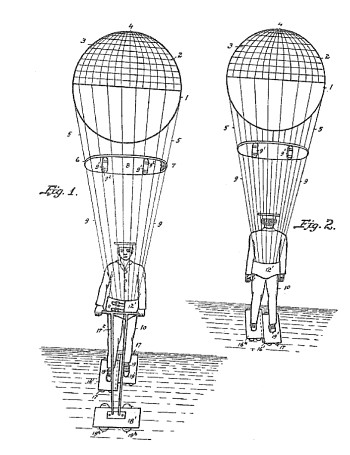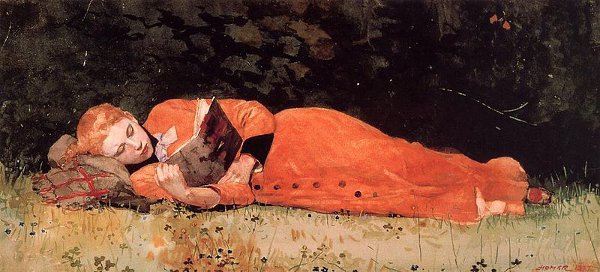obstringe
v. to put under obligation
Author: Greg Ross
Compound Interest
On Jan. 18, 1897, California farmer George Jones bought a quantity of livestock feed from Henry B. Stuart of San Jose. As security he signed a $100 promissory note that bore 10 percent interest per month, compounded monthly.
They had agreed that Jones would pay the debt in three months, but the note had run for almost 25 years when Stuart got tired of waiting and told his lawyer to sue. Judge J.R. Welch of the Superior Court of Santa Clara entered this judgment on March 6, 1922:
“Wherefore, by virtue of the law and the facts, it is Ordered, Adjudged and Decreed that said Plaintiff have and recover from said Defendant the sum of $304,840,332,912,685.16 with interest thereon at the rate of 7% per annum until paid, together with the further sum of $50.00 Plaintiff’s attorney’s fees herein with interest thereon at the rate of 7% per annum until paid.”
That’s $304 trillion, “more money than there is in the world, outside of Russia,” the New York Tribune reported drily. Jones paid $19.69 and filed for bankruptcy.
Speaking Terms
Indiana University anthropologist Daniel Suslak is compiling a dictionary of Ayapaneco, an indigenous language of Mexico that has only two remaining fluent speakers.
Unfortunately, the two aren’t speaking to each other.
Manuel Segovia, 75, and Isidro Velazquez, 69, live 500 meters apart in the southern state of Tabasco, but “they don’t have a lot in common,” Suslak told the Guardian in April. Segovia can be “a little prickly,” and Velazquez is “more stoic” and rarely leaves his home.
Without their cooperation, Ayapaneco may die out altogether. “When I was a boy everybody spoke it,” Segovia said. “It’s disappeared little by little, and now I suppose it might die with me.”
(Thanks, Sharon.)
Miracle Aid

Patented in 1918, Martin Jelalian’s “device for walking upon the surface of the water” enlists a gas balloon to hold the user upright as he “slidably walks” to his destination.
This seems an improvement on the water-walking contraptions of 1858 … unless the wind picks up.
A Puzzling Figure

A poser from Jerome S. Meyer’s Puzzle Quiz and Stunt Fun (1956):
“The mark above is the mark of evil. It is the symbol of murder and terror. Millions have died for it and millions have died because of it. Can you tell what it is?”
Divide and Conquer
In 1980, Colorado math teacher William J. O’Donnell was explaining that

when a student noted that

“My immediate reaction was that this student had stumbled onto a special case where this algorithm worked,” O’Donnell wrote in a letter to Mathematics Teacher. “Later, a couple of minutes of work revealed that this technique works for all fractions. Let a, b, c, and d be integers. Then

“Whereas this method can be conveniently applied on occasion, it does not offer the student much advantage when c does not divide a and d does not divide b.”
Sound Choices
Bertrand Russell’s 20 favorite words, given in response to a reader’s inquiry in 1958:
- wind
- heath
- golden
- begrime
- pilgrim
- quagmire
- diapason
- alabaster
- chrysoprase
- astrolabe
- apocalyptic
- ineluctable
- terraqueous
- inspissated
- incarnadine
- sublunary
- chorasmean
- alembic
- fulminate
- ecstacy
These are notable, I think, because it appears he wasn’t influenced by meaning.
Lv Lttr
Confined to an asylum in 1849, poet John Clare made this curious entry in a notebook:
M Drst Mr Cllngwd
M nrl wrn t & wnt t hr frm Nbd wll wn M r hv m t n prc & wht hv dn D knw wht r n m Dbt — kss’s fr tn yrs & lngr stll & Ingr thn tht whn ppl mk sch mstks s t cll m Gds bstrd & whrs p m b shttng m p frm Gds ppl t f th w f cmmn snse & thn tk m hd ff bcs th cnt fnd m t t hrds hrd
Drst Mr r fthfll r d thnk f m knw wht w sd tgthr — dd vst m n hll sm tm bck bt dnt cm hr gn fr t s ntrs bd plc wrs nd wrs nd w r ll Frnchmn flsh ppl tll m hv gt n hm n ths wrld nd s dnt believe n th thr nrt t mk mslf hvn wth m drst Mr nd sbscrb mslf rs fr vr & vr
Jhn Clr
Decoding it is simple enough — Clare had removed all vowels and the letter Y. Evidently it was the draft of a letter:
My Dearest Mary Collingwood
I am nearly worn out and want to hear from you — Nobody will own me or have me at any price and what have I done — Do you know what you are in my Debt — kisses for ten years and longer still and longer than that — when people make such mistakes as to call me God’s bastard and whores pay me by shutting me up from God’s people out of the way of common sense and then take my head off because they can’t find me — it out-Herods Herod.
Dearest Mary are you faithful or do you think of me — you know what we said together — you did visit me in hell sometime back but don’t come here again for it is a notorious bad place worse and worse and we are all turned Frenchmen — foolish people tell me I have got no home in this world and as I don’t believe in the other [? undertake] to make myself heaven with my dearest Mary and subscribe myself yours for ever and ever
John Clare
I almost offered this as a puzzle, but it’s too sad. “This is among the most disturbing letters that Clare ever wrote,” notes biographer Jonathan Bate. “It takes us inside his head during a phase of derangement. Even once one has broken the code, it is impossible to decipher the sub-text, especially as we know nothing about the identity of Mary Collingwood beyond the fact that in another of his lists Clare identified her as a Northampton girl.”
Episode
Darth Vader is piloting a barge to Salt Lake City to give a workshop on evildoing. Suddenly he finds himself approaching a crumbling brick aqueduct, at the foot of which is a basket of adorable kittens. He struggles to stop the barge, but it’s too late. The terrified kittens mew piteously, but they’re too weak to escape. Inexorably, implacably, the barge floats out directly over the basket. What happens?

Nothing happens. The barge displaces its weight in water, so there’s no additional load on the aqueduct.
The workshop is a great success.
Unquote

“In literature, as in love, we are astonished at what is chosen by others.” — André Maurois
